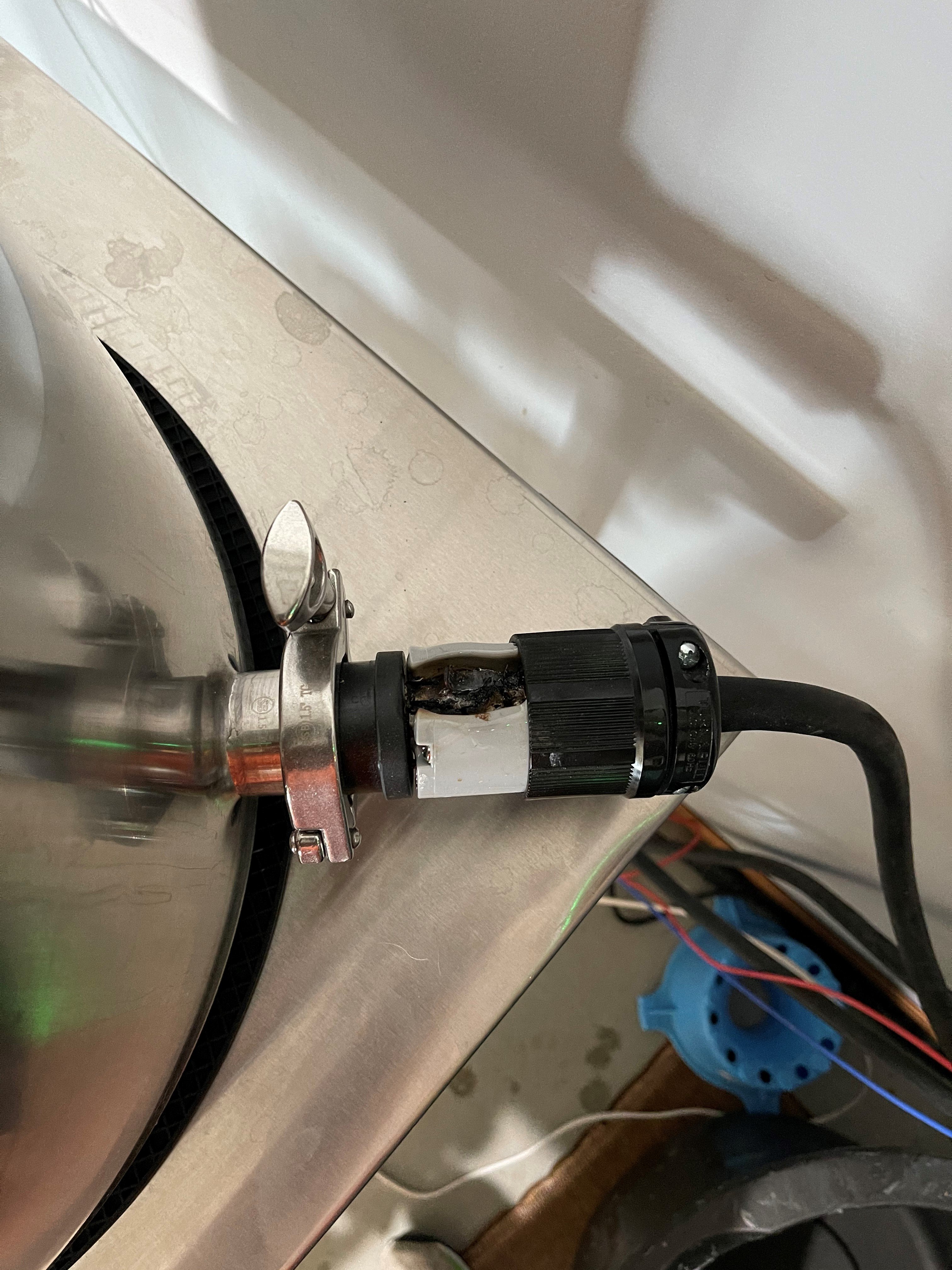I had read SOMEWHERE online, not sure where, that when you plug in your elements and they have that "twist-lock" to them, that you need to make sure that you perform that twist to keep them in place. I ALWAYS do this at the start of a brew day - always, no exception. However, I never check in the middle of a brew day. Lesson learned....
Noticed an electrical smell coming from somewhere. Thought that if it was the system, that the panel would have sensed the issue and killed it and not allowed it to do anything. However, the panel was still running and still operating as if nothing was wrong, so I didn't think it was that. Kept walking around and looking for the issue and made my way back to the system. Saw that the plug for the HLT element was glowing red... Must have came loose at some point. End result below... FML.
Now I need a new plug and a new element apparently. Element itself is fine, just the plug is all messed up.
Anyone know of a good way to keep these is place? Spike mentioned some way of supporting the cord to keep the weight from pulling on it. Anyone have any ideas/solutions for this? I have a table that I could put some clips on, just not really sure what to look for...
I will say that for something called twist lock, these don't twist much. You barely know you're doing anything when you twist it. I would think it would be like a good 1/4 turn to ensure it's actually locked!
Thanks.



Noticed an electrical smell coming from somewhere. Thought that if it was the system, that the panel would have sensed the issue and killed it and not allowed it to do anything. However, the panel was still running and still operating as if nothing was wrong, so I didn't think it was that. Kept walking around and looking for the issue and made my way back to the system. Saw that the plug for the HLT element was glowing red... Must have came loose at some point. End result below... FML.
Now I need a new plug and a new element apparently. Element itself is fine, just the plug is all messed up.
Anyone know of a good way to keep these is place? Spike mentioned some way of supporting the cord to keep the weight from pulling on it. Anyone have any ideas/solutions for this? I have a table that I could put some clips on, just not really sure what to look for...
I will say that for something called twist lock, these don't twist much. You barely know you're doing anything when you twist it. I would think it would be like a good 1/4 turn to ensure it's actually locked!
Thanks.





